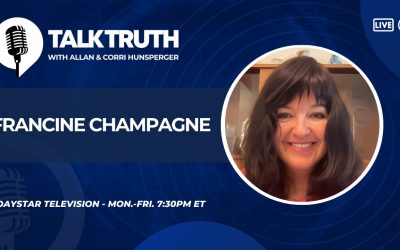
If a formula for excellent public schools could be condensed into a single word, the term “empowerment” comes closest to the mark. That concept lies at the heart of a good-news story recently brought to this city by journalist and author, Andrew Nikiforuk. His putative topic – Five Ways to Improve Public Education: A Talk About Taboos – sounded mild, but the content of the measures was quite revolutionary. Together, they boil down to a basic restructuring of control in the public school system.
A native of North Battleford, Nikiforuk once taught at the Winnipeg Child Development Centre, where he adopted the mantra, “There are no children who can’t learn to read, only those who haven’t been taught.” His first stop on this return trip, many award-winning articles and books later, was David Livingstone School, one of two elementary schools whose amazing success in teaching children with Fetal Alcohol Syndrome has attracted national attention.
This visit confirmed Nikiforuk’s central contention: site-based decision-making works better than the top-down model common to public schools. These teaching pioneers escaped the enervating grasp of what he calls “edubabble” by fortuitous accident. Nobody had ever seriously tried to reach FAS children before, so the teachers resorted to a long grind of trial and error. They headed in the direction of whatever worked and that process brought many of their challenged pupils up to grade level.
Nikiforuk’s lecture hammered home the point through the story of the Edmonton Public School Board, a pioneer in school-based management, and the visionary bureaucrat who transformed it, a superintendent named Emery Dosdall. Appointed in 1995, the man inherited what Nikiforuk described in the National Post Business Magazine as “a ho-hum, highly centralized big-city district hemorrhaging students to private schools.” Dosdall asked teachers, principals and school employees what they thought an ideal school should look like, and what rules and policies stood in the way of achieving that dream.
Unsurprisingly, improved student achievement emerged as the most important value, and a “dumb rules” committee codified 359 regulations that stood in the way of that goal. Dosdall eliminated them all. He removed the system’s nine assistant superintendants, and freed up individual schools to diversify their product and their supply lines. He took $20 million out of the central district’s administrative budget and gave the money back to the direct providers of the service. Principals in Edmonton now control 92 cents of each education dollar.
The outcome was quite spectacular. Schools stopped purchasing services they didn’t need and bought the ones they felt served the teaching mission. “After-school workshops” lost 85 percent of their customers, while demand for the district’s technology services tripled. “It became abundantly clear that schools behaved differently when they were spending their own money than when the district was expending resources,” concludes Dosdall’s successor, Angus McBeath.
As the monopoly walls came tumbling down, the public schools quickly became hotbeds of diversity and creativity. They specialized in previously unconceivable directions; Edmonton’s public system now contains religious academies, military schools, all-girl schools, hockey schools, ones for high achievers and low achievers, schools for young offenders, aboriginals and the fine arts. Included in the mix of 30 separate programs are schools that specialize in “normal” kids.
All of them are required to improve student performance by at least one grade level per year and to accomplish that, they began to rewrite curriculums. According to Nikiforuk, “the district is now producing some of the nation’s best classroom textbooks,” among them a new mathematics program, Math to the Max, that’s become a million-dollar bestseller. When a school demonstrates success in one niche, its program is available, and often adopted, by others, and the rewrites have become a significant new source of revenue.
Within a fairly short time, Dosdall turned a failing school system into a Mecca for learning. Where previously the Edmonton District had routinely reported the lowest achievement scores in provincial tests, they are now very much on the rise, albeit at a modest rate. Forecasters had predicted that its facilities would bleed 1,500 students a year to private schools, but enrolment actually rose by 3,000 in six years. Forty percent of elementary students and half of high school students now occupy classrooms outside their neighbourhoods.
“If you have a teacher committed to a certain topic or form of pedagogy and combine that with parents and kids committed to a school where they want to be, then you are going to have better achievement,” Dosdall says. He’s now shaking things up in British Columbia, where he was appointed Deputy Minister of Education last year. McBeath is advancing the program in Edmonton by encouraging teachers to improve their own subject expertise and adopt research-proven best practices.
Like so many public sector services, the Edmonton School Board suffered from an oppressive regulatory atmosphere that stifled energy, and ignored the value available from front line providers. In the process of reform, it tackled all of Nikiforuk’s “five taboos”: school choice, the content of curriculums, teacher training, standardized testing and school size.
The answers to those fearful questions were inside the Edmonton public system all along. In Nikiforuk’s words, it took one visionary to turn it into “a continental model for school reform.”
The tail has stopped wagging the dog.



